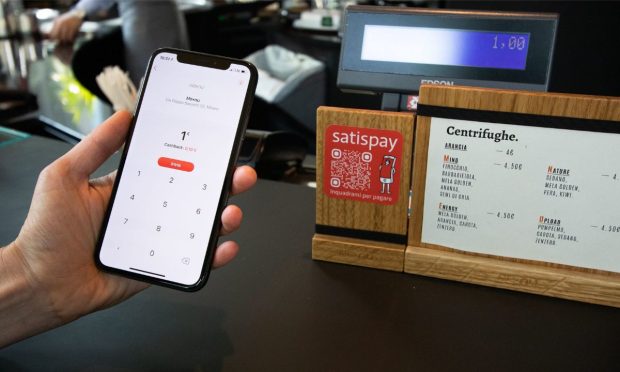Italy’s Digital Wallets Strive for Interoperability, Stronger Pan-EU Payments Integration

When PYMNTS assessed the landscape of digital payments in Italy for the “Benchmarking the EU’s Digital Engagement” series, it was observed that the country sits around the middle of the table for mobile wallet usage.
In fact, Italians use the payment method for 42.1% of online transactions and 18.7% of in-store purchases. And although the country scored higher than France in the CE Index (24.6), it was the least well-connected of the six European countries included in the report, with 76.1% of Italians having regular access to the internet and only 70% reporting owning a smartphone.
Read more: Benchmarking the EU’s Digital Engagement: Italy
The series also discussed the variation that can be observed in the EU’s preference for mobile wallets. While NFC-based solutions like Apple Pay and Google Wallet are used to varying degrees across the eurozone, other types of mobile wallets tend to be more localized.
In Italy, two popular payment methods compete with Big Tech NFC wallets and provide some key benefits for merchants.
Bancomat Pay and Satispay both offer mobile apps that allow users to connect their bank accounts and telephone numbers. They can be used to make peer-to-peer payments directly from one account to another and, for merchants wanting to accept electronic payments, they provide a cheaper alternative to cards.
Bancomat Pay is the mobile and online payment solution of Italy’s interbank network Bancomat, which operates a domestic card scheme and many of the country’s ATM machines. In fact, the word “bancomat” is used by Italians as a synonym for ATM.
Satispay, on the other hand, is run independently of any bank, debit or credit card network. It is accepted by merchants in Italy, Germany, Luxembourg and France, and has ambitions to expand across Europe.
In a recent LinkedIn post announcing the close of a €320 million Series D funding round, Satispay stated that the new capital will be used to fuel its growth into a “European digital payments super network.”
See also: Payments Startup Satispay Raises €320M, Is Italy’s Newest Unicorn
Integrating Europe’s Mobile Payment Systems
Not to be outdone by Satispay’s continental ambitions, Bancomat is also looking to expand its reach beyond Italy’s borders.
As part of the European Mobile Payment Systems Association (EMPSA), Bancomat Pay could soon be interoperable with mobile payment networks across Europe.
In August, EMPSA announced that it had successfully tested interoperability between Bancomat Pay and its peers in Switzerland, Germany and Austria. Once the separate systems are fully connected, users of Bancomat Pay will also be able to make payments at merchants who accept TWINT (mobile payment system in Switzerland) and Bluecode (found in Germany and Austria).
Learn more: EU Digital Wallets Take On Global Card Networks, Strive for Interoperability
Eventually, EMPSA plans to integrate the mobile payment systems of all its 16 members to create a single interconnected European payments network.
Overall, the story of Italy’s mobile wallets is one of ever more Europeanism. After all, as one of the eurozone’s founding countries, with cash and cards, Italians have long been used to having a payment method that works easily outside of their country. Why should mobile wallets be any different?
But Europe’s fragmented payment market is unlikely to change any time soon. Once habits and norms are entrenched in a country, they can be difficult to change.
What could change, however, is the way that all those different payment methods work together. Protocols for moving money between any bank within the Single Euro Payment Area (SEPA) and beyond mean that there isn’t a lack of cross-border payment rails at the infrastructural level.
There is also plenty of political will to further integrate national systems and create more interoperability between euro- and non-euro-based payment networks.
Going forward, different local preferences for digital wallets are expected to have little effect on how payments work when Italians and other Europeans travel abroad. Thanks to efforts by EMPSA and other such initiatives, merchants will increasingly be able to accept a wide range of wallets in a more interconnected European payment system.
For all PYMNTS EMEA coverage, subscribe to the daily EMEA Newsletter.
